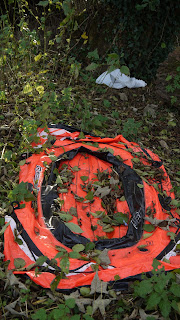Collection of Found objects
Reflection
Through building this archive of images of found objects I have begun to think about the kinds of objects that appear most frequently within these photos. After reading the book 'The Object' my awareness of the coupling of objects has developed. For example, I have always been told whilst growing up that if you find a glove to leave it on a wall, for the owner to come back and collect. That in itself seemed fair enough, maybe the owner would realise it ha gone missing and return to find it. However It is not until now I realise that this rule doesn't seem to apply to every other object that I began to question it more. What makes one object seem more significant then another. Is a pen not as important as a glove? Is it because the glove is part of a pair and thus still deemed useful, why is that?. The language of object dictates to us what objects are used for and often there function and rarity play an important part in the status of the object. However a pair in any form seem to be the exception to the rule. Natural and un-natural pairs exist within the realm of objects and cavort to display narrative. A lost glove gives off a sense of helplessness and commands the finder to pick it up and have sympathy on it. This is an example of a natural pair, two objects that have been bound together from birth. A good example of an un-natural pair are to objects that are interchangeable yet there species have formed a close bond. A door and a door mat illustrates this point well. All door mats are lost without being paired with a door, any door will do, and yet the door and the doormat have produced such a close bond that the narrative is still in place even when the door (a main component) is missing. If I were to put a door mat on the beach next to the waves, the reading of the object would still portray an entrance, or exit of sorts. This nature of objects has influenced my own practice, as I continually try and read and decode the objects secret language and harness its essence into contemporary art practice.


















No comments:
Post a Comment